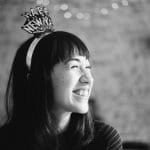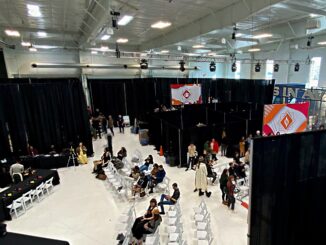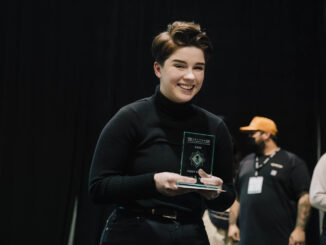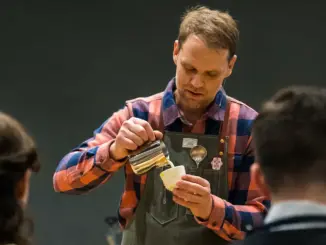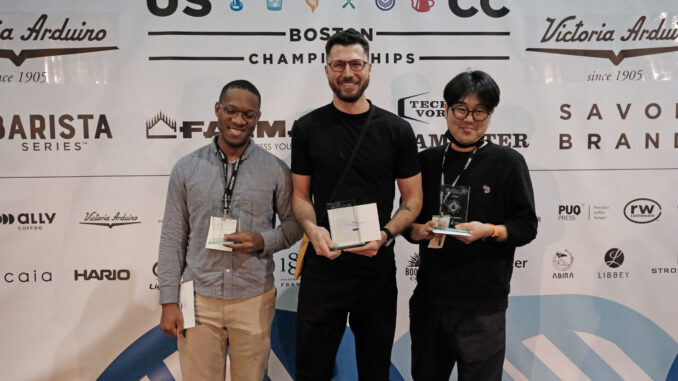
Elika took inspiration from the 2021 World Brewers Cup to craft a routine-winning blend for this year’s upcoming championship.
BY KATRINA YENTCH
BARISTA MAGAZINE ONLINE
Cover photo courtesy of Specialty Coffee Association
The drive to achieve World Coffee Championships fame has never been stronger for 2022 first-place U.S. Brewers Cup Champion Elika Liftee (he/him). After placing third at the World Brewers Cup in October 2021, Elika is working with a quick turnaround to attempt to place number one at the 2022 World Brewers Cup in Melbourne, Australia, in September. Using a few of the same tried-and-true tools, along with a new recipe (a thoughtful blend of Sudan Rumé and Eugenioides stacked separately atop one another), Elika is motivated and eager to refine his winning routine for worlds this year. We chatted with him about the process of formulating his routine, and what he’s excited about for the next several months ahead.
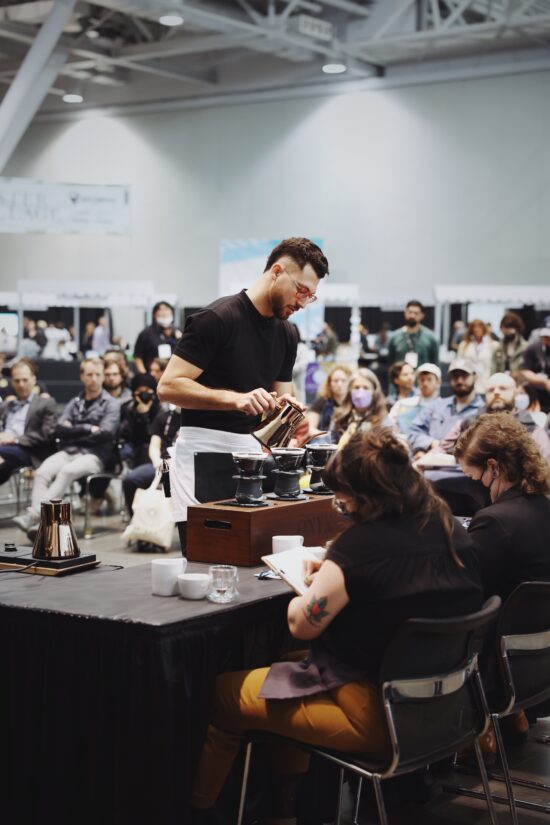
Katrina Yentch: I know an obvious answer for many on why they return to competition would be to win first place, but what are your personal reasons for coming back to Brewers Cup?
Elika Liftee: I want to win Worlds! That’s the oversimplification of my reasons. I understand that it has been a difficult two years in the industry, and I’ve learned a lot over that timeframe about health and wellness while being a barista. Additionally, the U.S. shut down after I won, and travel is still difficult. I still have a lot to learn and offer the brewing community in the U.S. For worlds, I learned a lot and was so close. I want the opportunity to learn more about the global coffee industry and compete again on the world stage. I also made many great friends in Milan, and I’m excited to keep building these relationships that have helped me grow.
You used a blend of Sudan and Eugenioides at a 1:1 ratio. What other kinds of combos did you try during the dialing-in process, and how did you decide you would stack them on top of one another rather than blend?
I started blending right after worlds. I blended years ago in a qualifier but didn’t do well, and seeing people like Matt, Daiki, and Ply find success blending (at the 2021 World Brewers Cup) inspired me to try again. I tried Gesha, but I found that too complex coffees were tough to find complementary flavors and tasted like a blend.
I had the first successful combo with Guatemala El Socorro Gesha Washed and Inmaculada’s Eugenioides. Before the SCA announced the competition, my green coffee had aged out. Before USBrC, I’d started looking for a replacement coffee that was complex and had notes of pineapple. This search led me back to our (Onyx Coffee Lab) offerings from Inmaculada and the Sudan Rumé. The coffee hit everything I wanted it to and elevated my cup in a way I didn’t expect. I effectively created a louder version of a Gesha flavor profile—more distinct tropical fruit, more body, and more distinct floral flavors.
For the ratio, the decision came from experimentation. I cupped both coffees and scooped different portions into a separate bowl to test them out. The flavor ratio I wanted was 60/40 Sudan/Eugie. However, due to the different ways each coffee extracts, I needed a 50/50 blend to achieve this. Then there’s trying different roast profiles, and the Eugenioides I used was roasted for espresso back in December.
The decision to layer also came from experimentation. I found that mixing the grounds gave me inconsistent flavor balance and extraction. It turned out that layering Eugie on the bottom and Sudan on the top achieved my target flavor balance with ultra consistency. I froze 10 different brews and cut the “puck“ open to view the intact layers. The structure was evident from the distinct roast profiles of each coffee, and there was very minimal mixing of the grounds after brewing my recipe.
This recipe excites me a lot. I use a 1:12.5 ratio for texture and ideal flavor balance for both coffees. I’ve never seen a competitor blend and approach brewing each coffee in the combination separately. I’ve never figured out how to measure the extraction of each coffee. Based on experimentation and flavor profile, my target is 16% extraction of Eugenioides and 23% of the Sudan Rumé.
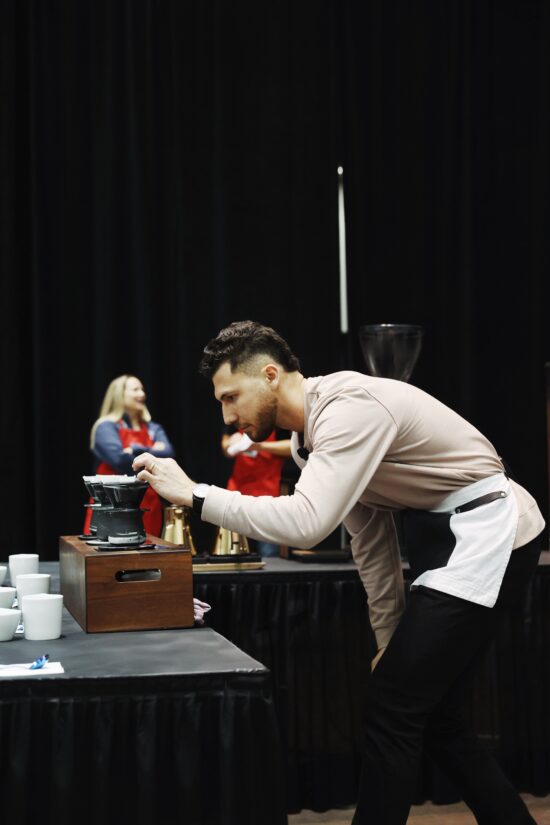
Did you use any kind of particular water treatments for your coffee?
Water is something I’m trying to learn more about. It has become very trendy to customize your water profiles! I used a five-gallon jug of distilled water and mixed in three packets of Aquacode and six drops each of calcium chloride and magnesium chloride from Lotus Coffee Products for a 110ppm water base. I already liked my 90 ppm base of AC minerals. I played with adding different minerals and found my cup more vibrant while maintaining the sweetness and texture I was already achieving after adding the additional Ca and Mg.
How did you decide what coffee tools to keep and leave behind from your last routine?
The tools I chose were a collection of making small improvement decisions and tools I’ve used over the years. I’ve historically presented some form of discipline and innovation on-stage, which still carries over into what I do. I made decisions that were improvements on my brewer, box, Melodrip, and kettles.
I worked with a ceramicist on my version of the Kalita when MK Ceramics offered a prototype brewer. Once I had it in hand, I loved it. It’s familiar in shape and function but less prone to clogging and gives me more freedom of flow rate. I did, however, want even more freedom with flow rate, and they were able to adjust that for my Signature MK Dripper. My adjustments to the Melodrip Lift have occurred over the years. My previous models have been bulky or too unstable to be used widely, but 3D printing gives us the freedom to make adjustments and improvements.
I already had a brew box made after 2020 for World Brewers Cup, and I saw no need to get a new one made. I’ve also used my Fellow copper Kettles for three years now.
You can check out a complete breakdown of Elika’s tools here.
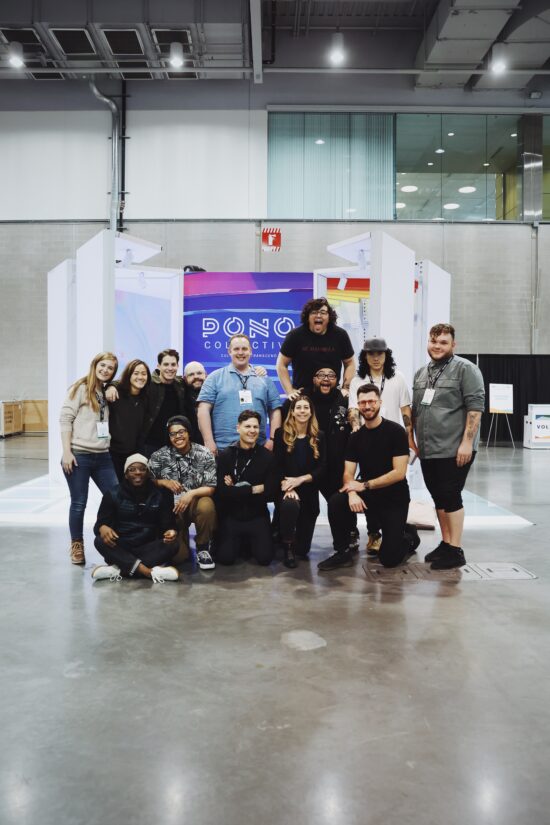
Are you planning on changing anything between now and Melbourne for your routine? Or just working on honing in with your winning first-place U.S. Brewers Cup routine?
Like I said in my post-final interview, I gave a routine that day that I wish I had at (2021) worlds. I believe that the performance I offered can translate to the next level, but I want to refine it. I know there is room for improvement in compulsory and presentation, and I’ll be working with my coach and friend Dylan on these areas. There was a quick turnaround for the U.S., and with the extended timeframe I have, I’d like to inject more personality and detail into my routine. I’m thrilled with what I have right now, but I want this to be a foundation for improvement. More polish and more me.

